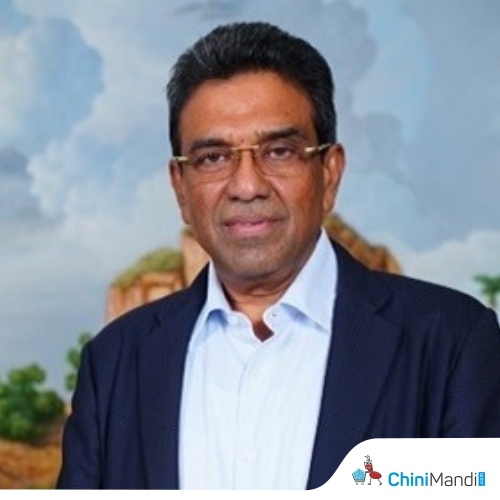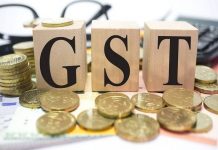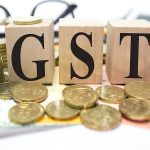After having surplus sugar production for three years in a row, the country’s sugar production in 2023-24 is expected to be less than the previous seasons. The main reason for low sugar production is scanty monsoon rains in Maharashtra and Karnataka, which adversely affected sugarcane growth. The Government had to intervene on crucial policy matters, to ensure sufficient domestic sugar stocks to meet demand. The Government curbed sugar exports and imposed restrictions on ethanol production from sugarcane juice/syrup and B-heavy molasses.
With so many developments taking place in the initial months of the new season, there are several apprehensions about the availability of sufficient sugar stocks in the remaining months of the season and whether the country will be able to achieve the ethanol blending target in the current ethanol supply season.
The President of the Indian Sugar & Bio-energy Manufacturers Association (ISMA), Mr. Mandava Prabhakar Rao in an exclusive interview with ChiniMandi, said that due to less rains this year, sugar production is adversely impacted in Maharashtra, Telangana, Tamil Nadu, Andhra Pradesh and Karnataka.
He expects overall sugar production for the season to go down by about 10-11% at 324 lakh tons, compared to the previous sugar season of 2022-23, wherein net sugar production was 366 lakh tons.
Q. In October 2023, ISMA released its initial sugar production estimate for 2023-24, projecting a total of 337 lakh tonnes (excluding ethanol diversion). What is the sugar production you are expecting in the current season?
Ans. Due to less rains this year, sugar production is adversely impacted in Maharashtra, Telangana, Tamil Nadu, Andhra Pradesh and Karnataka. Production in Karnataka is expected to go down by almost 30% and in Maharashtra by 20-30% as compared to last year. Uttar Pradesh has had stable cane production in the last 5-6 years and this year production is expected to be higher.
We expect overall sugar production for the season to go down by about 10-11% as compared to the previous sugar season of 2022-23, wherein net sugar production was 366 lakh tons. We expect net sugar production in the current season at 324 lakh tons, as estimated in December’2023.
As per practice, ISMA shall be conducting mid-harvest satellite imagery this week and will come out with 2nd advance estimate of sugar production in the latter part of January 2024.
Q. The Government has implemented various measures to secure ample domestic sugar stocks, including a restriction on sugar exports and ethanol production from B-heavy molasses and Sugarcane Juice/Syrup. Do you perceive the Government’s actions as overly critical in its assessment of the situation, or are these measures essential to safeguarding sugar stocks for meeting domestic demand?
Ans. The Government has curbed sugar export and restricted ethanol production from B Heavy molasses and sugarcane juice to maintain sufficient domestic stocks of sugar, to ensure sugar prices are under check. I believe the sugar prices will remain stable at last year’s level. The sugar industry is producing more sugar than the demand in the country, so the sugar consumers will not face any difficulties.
The policy interventions were required to maintain demand and supply equilibrium so that farmers were paid on time. There is a scope for higher sugar diversion towards ethanol production by another 10-12 lakh tons to have a healthy (not excess) closing stock.
Q. Considering the imposed constraints on feedstocks for both grain-based distilleries and molasses-based distilleries, do you anticipate the nation meeting the 12% ethanol blending target in the current ethanol supply season?
Ans. The government is fully geared up for the EBP and will ensure that the PM’s vision comes true. The sugarcane industry is aligned with the government’s vision and has made and is willing to make more investments in increasing its capacity for ethanol production.
Sugarcane is a very efficient crop in terms of water required for a litre of ethanol or area required for producing a litre of ethanol as compared to corn or rice. Therefore, stabilizing the cane production in South India is the need of the hour and ISMA will be urging the Government to focus on installing drip irrigation systems in South India along with soil and water conservation to ensure groundwater recharge.
The pricing for ethanol from syrup shall be enhanced to equal or higher than that of corn because of economic reasons as well as its efficiency contributing to sustainability. Maintaining enough sugar for domestic consumption is the first priority for both the government and the sugar mills; however, we believe that the balance can and will be diverted for the manufacture of ethanol and we will together get closer to achieving the vision of EBP.
Q. With significant investments made by sugar industries in ethanol production, do you believe that the imposed restrictions on ethanol production from sugarcane juice/syrup and B-Heavy molasses will hinder revenue generation and impact profit margins?
Ans. With the support of the Government, the sugar industry has created a lot of capacity for the production of ethanol from B-heavy, C-heavy molasses and sugarcane juice. The ethanol diversion has been on the lower side this year and the Government has capped total sugar diversion towards ethanol production at 17 lakh tons. Ethanol production capacity will remain underutilized. Due to ethanol and export restrictions, I feel that sugar mills will have higher carry forward sugar stocks than that of the last year due to the policy interventions taken by the Government. We have represented to the Government to allow an additional 10-12 lakh tons of sugar diversion towards ethanol production. Even if this is allowed, the industry will have adequate carry forward stocks for next season.
Q. Is there a likelihood that the country will need to resort to importing sugar in the near future?
Ans. Like I have given the figures above, the sugarcane industry is producing enough and more sugar for domestic consumption. I do not see any possibility of import as of now.
Q. ISMA has recently undergone a rebranding. Tell us about that.
Ans. The Ethanol Blending Programme is an important step for the country as well as the world because of its several benefits to the environment. In India, there are several cities which are facing acute environmental pollution. The national capital is the top-most city in the world to face severe pollution. The sugar industry is a primary producer of ethanol. However, in the last several years, the industry has stepped up its game, and we are the chief producer and contributor to green energy in the form of ethanol bio-fuel. When ethanol is blended with petrol, it burns better thereby checking vehicular emissions. The Ethanol Blending Programme is saving the country’s exchequer and foreign exchange, as we don’t have to import crude due to the petrol substitution.
ISMA has played an important role in this transformation. The Association has campaigned for ethanol fuel and was instrumental in getting conducive policy interventions from the Government like interest subvention scheme and separate ethanol procurement prices from different feedstocks from molasses. In addition to this, the industry is emerging as an energy hub with Compressed Biogas (CBG) and Hydrogen as upcoming clean fuels, which can be developed in sugar mills. So we felt that it was imperative that we recognize bio-fuel, and make it a part of ISMA rebranding.
Moreover, ISMA is planning and will be taking steps to stabilise sugarcane production in the country with the introduction of drought-resistant and all-weather cane varieties. This will safeguard cane crops from the vagaries of monsoon and will lead to the success of EBP. ISMA is playing a crucial role.
Q. As we approach Budget 2024, what are the key industry expectations and wish-list items that you would like to convey to the Finance Minister?
Ans. The GST on flex-fuel vehicles (FFVs), which can run on any blend of petrol-ethanol including pure ethanol, should be reduced from the current 28% plus to 5%. This will make it acceptable to consumers. To make EBP successful, more vehicles should be able to blend ethanol at 20% and beyond. Unless that happens, the demand for ethanol fuel will not be met, and the sugar industry will be unable to earn returns. So the Government should look a consumer-centric policies for FFVs.











